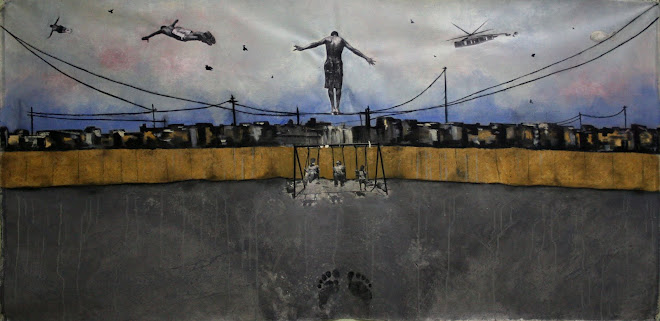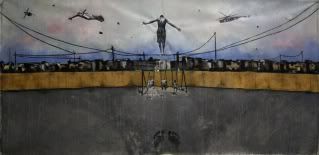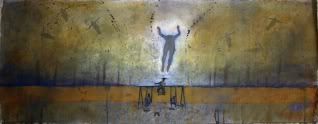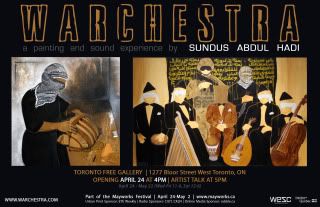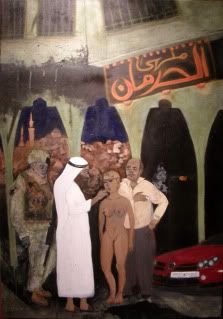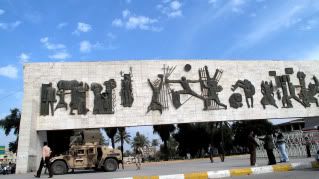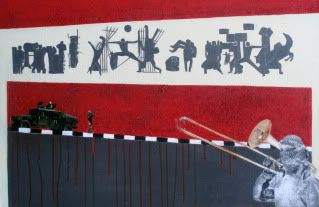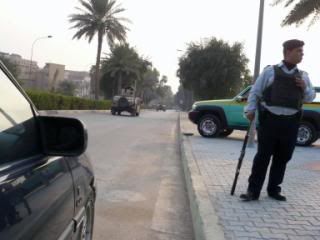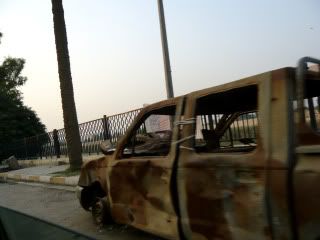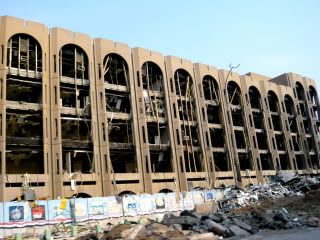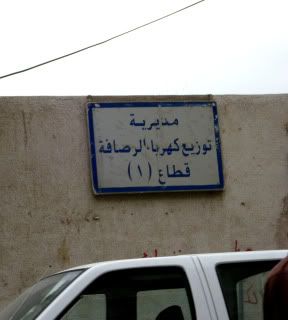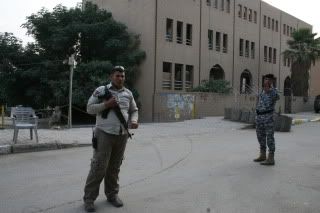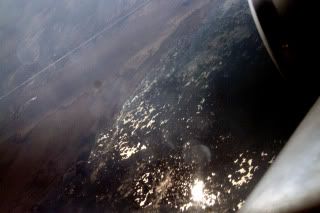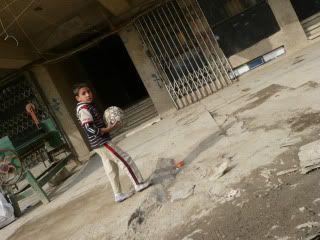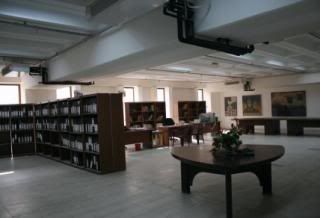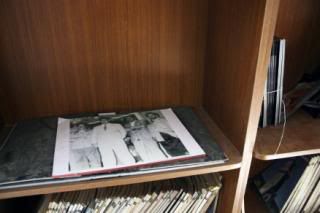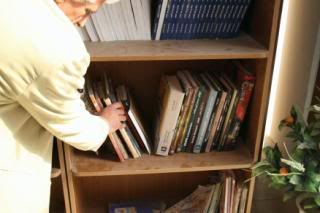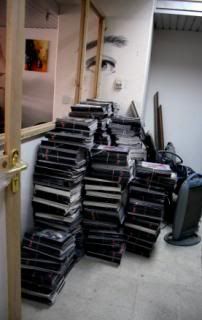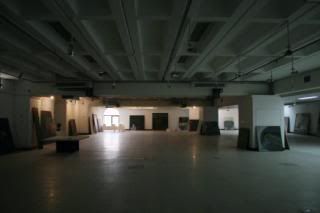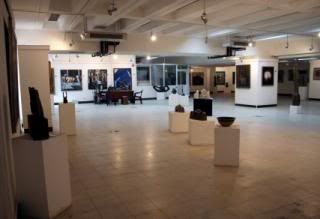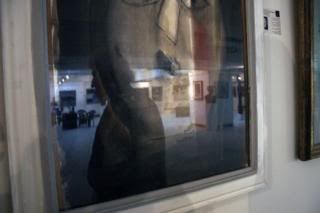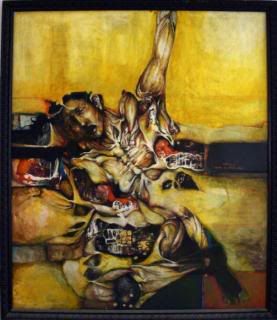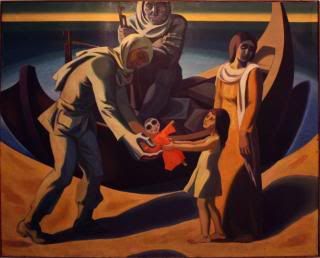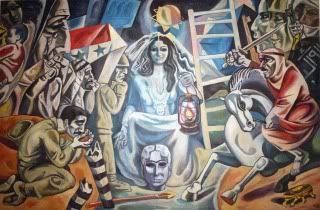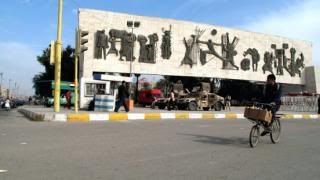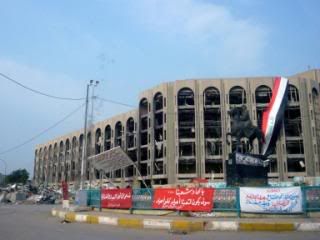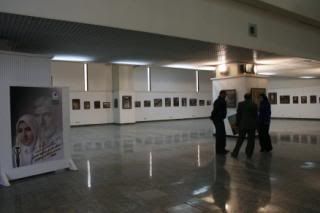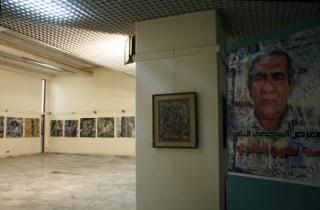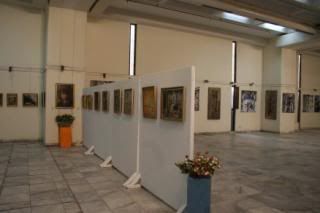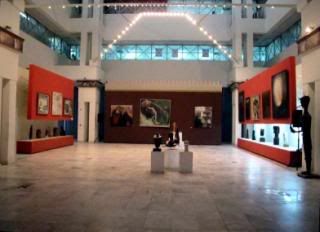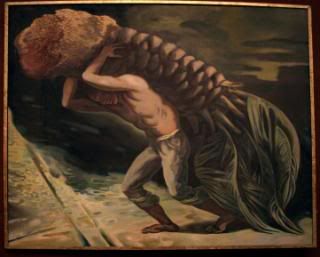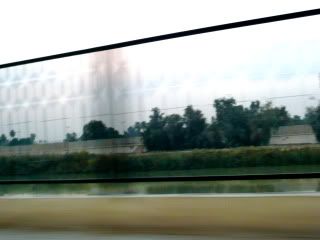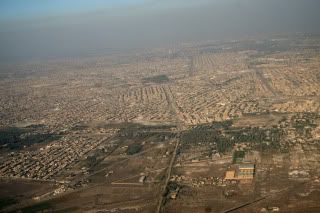Jerusalem. The darkness that hangs over the city doesn't fade with the sun. The depth of the land doesn't shallow like its dry sea beds. The history doesn't renew, the present its living doesn't get written down in history. Today, Jerusalem is dying, like her sister Baghdad. They both lie on the deathbeds, waiting for a presence as strong as they once were to rescue them.
A prison for one, security for another. Both jails. Steel and concrete make toxic the landscape. And what a landscape...
A landscape for the narrow-minded.
Jerusalem. Her ghosts deny her her right to live the present moment, always suffering the history of her loaded land. Loaded guns, settlers and soldiers. When has identity become a crime? A man, her son, stands up for himself, handing his identity papers to an identity in crisis, clothed in fatigues. Her sons fatigued from the harassment and the humiliation they endure on a daily basis.
Shoved down our throats, we choke. Suffocated. The city, suffocated.
Is this what our prophets would have wanted us to do with their teachings? In the land they made holy? In the belly of the beast, we choke on its bile.
We reach Jerusalem in search for salvation, a selfish salvation that leaves us blind to the struggles of mankind. Because man is one, but divided. We reach Jerusalem in a state of willful blindness, maintaining us through our journey of personal salvation. A selfish race, is the human race.
Deeper than one can ever imagine, Jerusalem's roots are rotting beneath her divine earth.
Jerusalem is ours, it is the center of our universe, as Baghdad is the sun. Jerusalem remains frozen in time, while Baghdad reverts back.
Its a strange time today and always, forever and never, when one must focus on their breath to remember they exist and not fade like her glorious empires.
Corruption and repulsion, revelations obscured.
A prison for one, security for another. Both jails. Steel and concrete make toxic the landscape. And what a landscape...
A landscape for the narrow-minded.
Jerusalem. Her ghosts deny her her right to live the present moment, always suffering the history of her loaded land. Loaded guns, settlers and soldiers. When has identity become a crime? A man, her son, stands up for himself, handing his identity papers to an identity in crisis, clothed in fatigues. Her sons fatigued from the harassment and the humiliation they endure on a daily basis.
Shoved down our throats, we choke. Suffocated. The city, suffocated.
Is this what our prophets would have wanted us to do with their teachings? In the land they made holy? In the belly of the beast, we choke on its bile.
We reach Jerusalem in search for salvation, a selfish salvation that leaves us blind to the struggles of mankind. Because man is one, but divided. We reach Jerusalem in a state of willful blindness, maintaining us through our journey of personal salvation. A selfish race, is the human race.
Deeper than one can ever imagine, Jerusalem's roots are rotting beneath her divine earth.
Jerusalem is ours, it is the center of our universe, as Baghdad is the sun. Jerusalem remains frozen in time, while Baghdad reverts back.
Its a strange time today and always, forever and never, when one must focus on their breath to remember they exist and not fade like her glorious empires.
Corruption and repulsion, revelations obscured.
